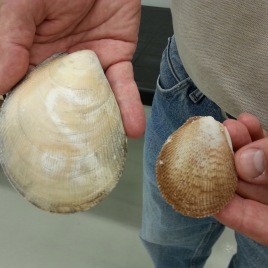A new species of clam, the giant file clam (Acesta cryptadelphe) was discovered off the coast of Newfoundland. The species was first spotted over 30 years ago, and thanks to DNA analysis it has been confirmed as a new species. The species is so similar to the file clam that the scientists decided to name […]
Category: Paper of Interest
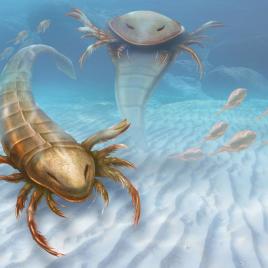
New species of giant sea scorpion
An ancient species of giant sea scorpion, Pentecopterus, which could grow up to six feet in length, has been identified after examining more than 150 fossil specimens of both adult and juvenile specimens. The fossils were uncovered in Iowa and lived approximately 460 million years ago. The species likely lived in a shallow mix of […]
Low vitamin D levels associated with an increased risk of MS
Low vitamin D levels are associated with an increased risk of multiple sclerosis (MS) in European populations, however whether vitamin D can delay or prevent the onset of MS requires further investigation, according to researchers. The authors used data from the International Multiple Sclerosis Genetics Consortium study, which involves 14,498 people with multiple sclerosis and […]

New guidelines to reduce pain during vaccinations
New Canadian guidelines aim to reduce pain during vaccinations in both children and adults. Pain during the vaccination process can make children and adults hesitant to receive future immunizations. The guidelines update previous guidelines, published in 2010, and have been expanded to cover adults as well as children. The recommendations are designed to be used […]
Tracing the family history of HIV
Lentiviruses, a group of retroviruses including HIV and SIV, the simian version of HIV, have been infecting primates as far back as 16 million years ago according to DNA sequencing. Researchers studied an antiviral gene called TRIM5 in 22 species of African primates. They found that a cluster of changes unique to the TRIM5 proteins […]
How to build a gas giant
Using computer simulations researchers have modeled the evolution of the gas giants in the Solar System, potentially providing an account for how the largest planets in our system formed. The study shows that when small centimeter- to meter-sized “pebbles” slowly accumulate they form planetesimals which become the cores of gas giants. It was previously thought […]
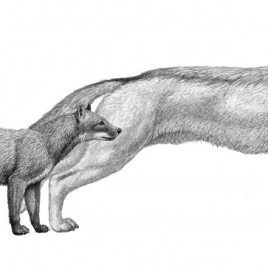
Dogs evolved with climate change
The evolution of North American dogs shows that evolution can be a direct consequence of climate change, and is not always associated with an “arms race” between ancient dogs and their prey. Researchers studied fossil elbows and teeth of 32 species of dogs from 40 million years to two million years ago, the same period when climate […]
Discovering how a new class of drugs works against super viruses
An emerging class of drugs, AMLPs (antimicrobial lipopeptides), shows promise in the fight against superbugs, yet until now researchers have lacked a molecular-level understanding of how they act. According to a new study AMLPs clump together to form microscopic balls called micelles, which selectively kill stick to bacterial membranes – a complex structure that is […]
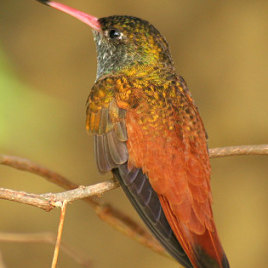
How hummingbirds drink: rethinking 50 years of research
High-speed videos have shown how hummingbirds feed on nectar, and it’s not what was previously thought. It’s not in the same way fluid rises in a capillary tube. Hummingbirds actually extract nectar by creating a tiny pump using the tongue. The new findings mean that fifty years of research studying how hummingbirds and floral nectar […]
The importance of health care in the federal election
In the upcoming federal election, health care must be a key issue otherwise Canada’s health care problems will continue, according an editorial in the Canadian Medical Association Journal. Additionally the editorial calls on federal political parties to articulate clear policy platforms on health care. The Deputy Editor of the CMAJ, Dr. Matthew Stanbrook, says “the federal government […]

Explaining the origin of shepherd moons
The origin of “shepherd moons” in planetary rings such as those found on Saturn and Uranus may be a natural consequence of ring evolution around giant planets. Studying the two shepherd moons in Saturn’s F ring system, Prometheus and Pandora, researchers has found how these moons may form. Using computer simulated collisions between icy moonlets […]
This is your brain on Whistled Turkish
While language is thought to be primarily a function of the brain’s left hemisphere, new research shows, it isn’t necessarily so. Whistled Turkish, a form of Turkish adapted into a series of whistles to allow for communication over greater distances, is processed equally in both brain hemispheres, researchers have found. Whistled Turkish is the only […]
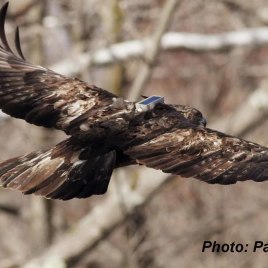
Eastern Golden Eagle populations and environmental change
Using GPS trackers and studying feather samples from 42 Golden Eagles (Aquila chrysaetos) researchers found that they exhibit migratory connectivity, as individuals from the same breeding population migrate to the same wintering area. This means that subpopulations of the Golden Eagle are more vulnerable to environmental changes than currently expected. The authors found that individual […]
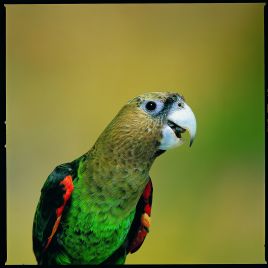
The Cape Parrot – a new species
Genetic analysis of the Cape parrot, currently considered a Poicephalus robustus sub-species, shows that it is genetically distinct from other P. robustus subspecies and should be elevated to the species level. The researchers believe this may allow for better planning and implementation of conservation strategies for the Cape Parrot. The researchers genotyped 138 specimens from […]
Trans fats, not saturated fats, are the real danger
Saturated fats are not associated with cardiovascular disease, coronary heart disease, stroke, or type 2 diabetes, while trans fats are, according to a meta-analysis of studies. Researchers reviewed 39 studies from around the world, where nutrients, typically refined carbohydrates, were replaced with saturated fat. The researchers found no association between saturated fats and health outcomes, […]
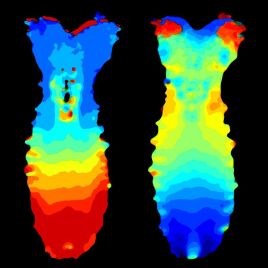
Filming the brain activity of a fly
Using imaging technology together with technology for detecting neuronal activity from specific groups of cells, a team of researchers has been able to “film” the activity of the entire central nervous system of a developing fly, Drosophila melanogaster. This type of methodology is expected to help advance the understanding of the neuronal networks that dictate […]
